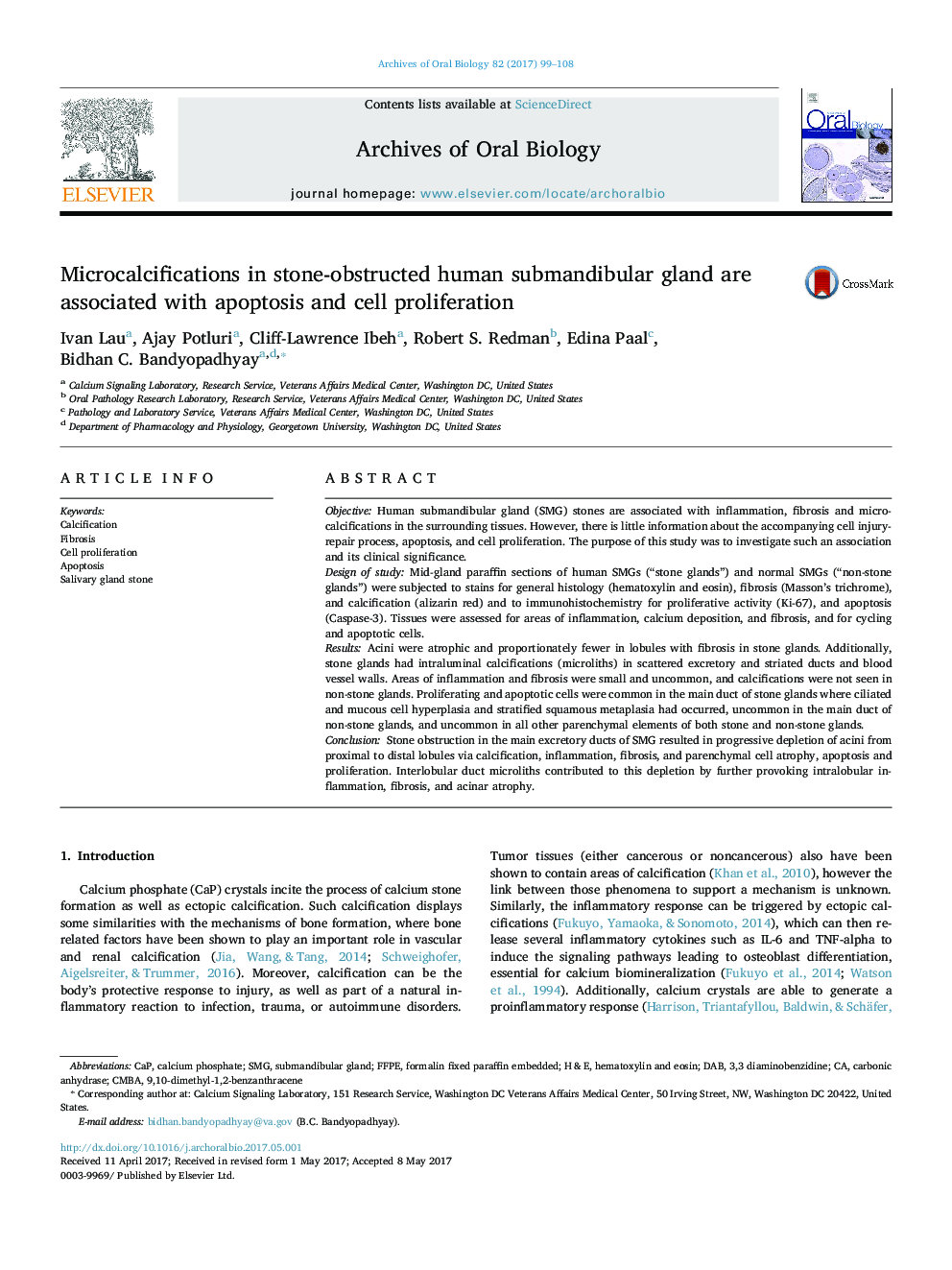| کد مقاله | کد نشریه | سال انتشار | مقاله انگلیسی | نسخه تمام متن |
|---|---|---|---|---|
| 5637911 | 1583271 | 2017 | 10 صفحه PDF | دانلود رایگان |
- Calcification in sialolithiasis, ductal obstruction.
- Clinical pathology and predisposition in patients with sialolithiasis.
- Interrelationship â Calcification, Inflammation and fibrosis, and stone pathology.
- Calcification, apoptosis, cell proliferation, salivary gland cancer.
ObjectiveHuman submandibular gland (SMG) stones are associated with inflammation, fibrosis and microcalcifications in the surrounding tissues. However, there is little information about the accompanying cell injury-repair process, apoptosis, and cell proliferation. The purpose of this study was to investigate such an association and its clinical significance.Design of studyMid-gland paraffin sections of human SMGs (“stone glands”) and normal SMGs (“non-stone glands”) were subjected to stains for general histology (hematoxylin and eosin), fibrosis (Masson's trichrome), and calcification (alizarin red) and to immunohistochemistry for proliferative activity (Ki-67), and apoptosis (Caspase-3). Tissues were assessed for areas of inflammation, calcium deposition, and fibrosis, and for cycling and apoptotic cells.ResultsAcini were atrophic and proportionately fewer in lobules with fibrosis in stone glands. Additionally, stone glands had intraluminal calcifications (microliths) in scattered excretory and striated ducts and blood vessel walls. Areas of inflammation and fibrosis were small and uncommon, and calcifications were not seen in non-stone glands. Proliferating and apoptotic cells were common in the main duct of stone glands where ciliated and mucous cell hyperplasia and stratified squamous metaplasia had occurred, uncommon in the main duct of non-stone glands, and uncommon in all other parenchymal elements of both stone and non-stone glands.ConclusionStone obstruction in the main excretory ducts of SMG resulted in progressive depletion of acini from proximal to distal lobules via calcification, inflammation, fibrosis, and parenchymal cell atrophy, apoptosis and proliferation. Interlobular duct microliths contributed to this depletion by further provoking intralobular inflammation, fibrosis, and acinar atrophy.
104
Journal: Archives of Oral Biology - Volume 82, October 2017, Pages 99-108
